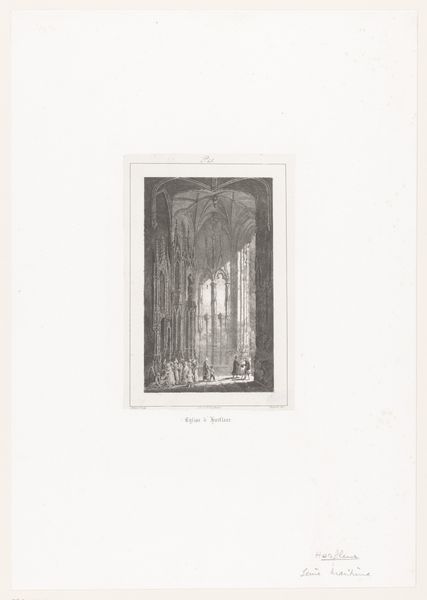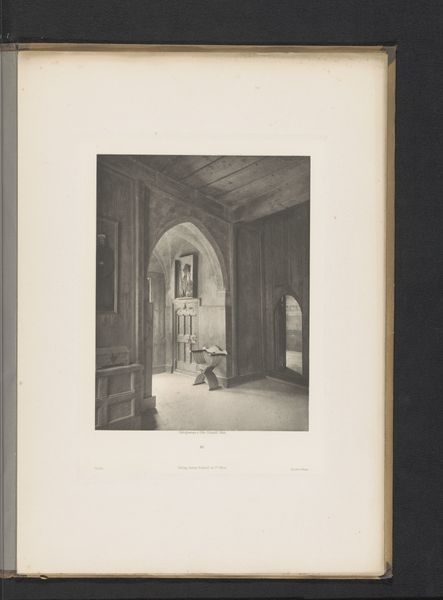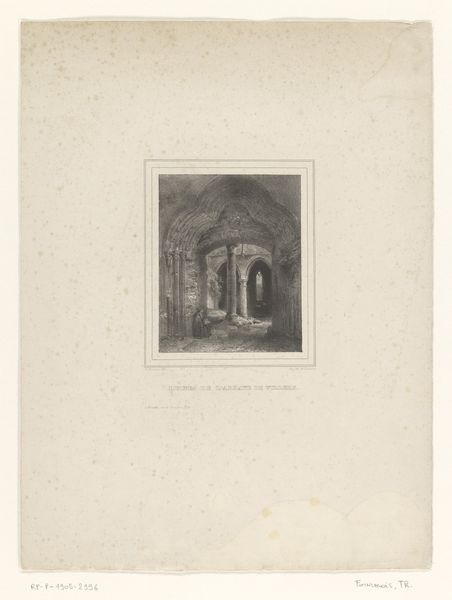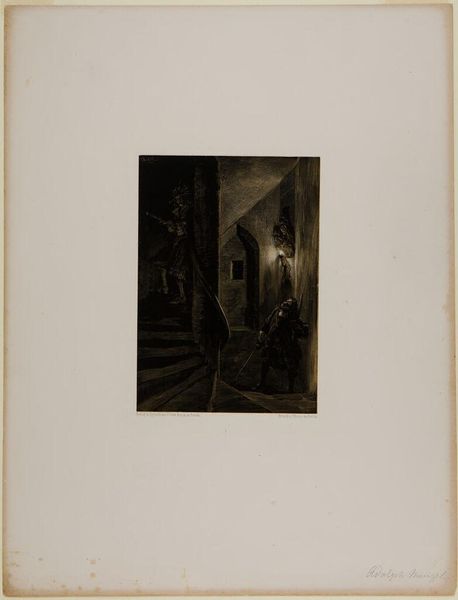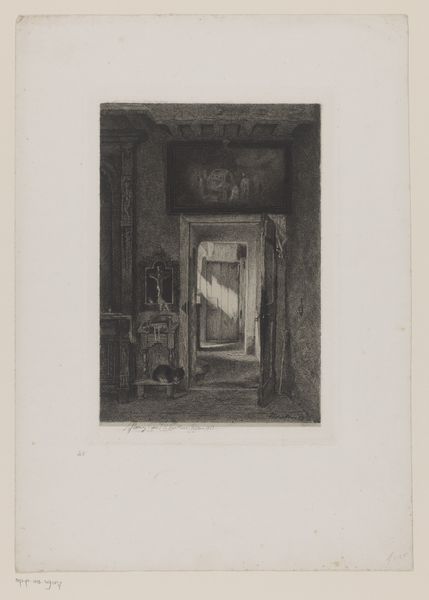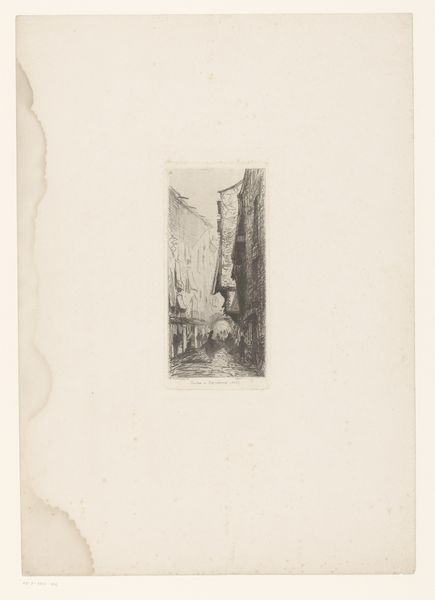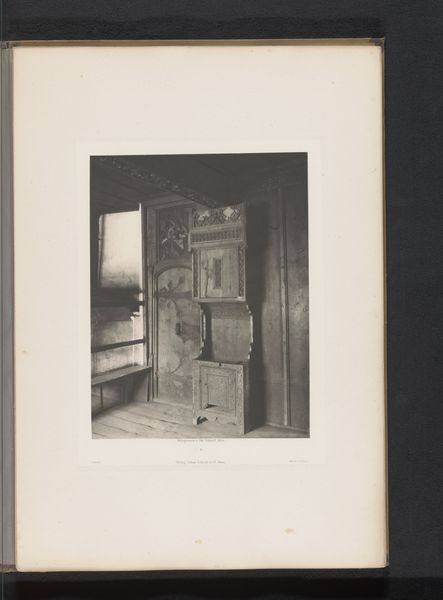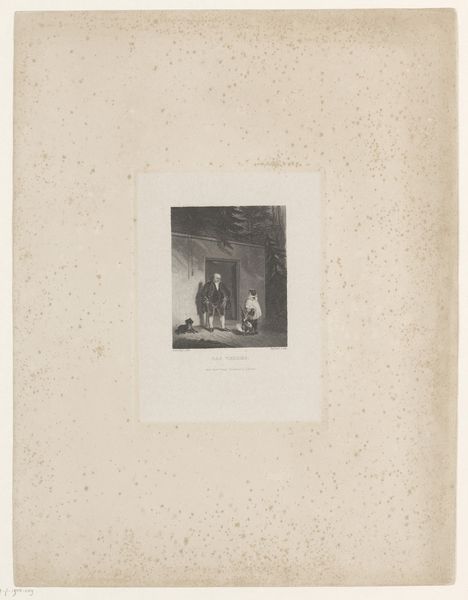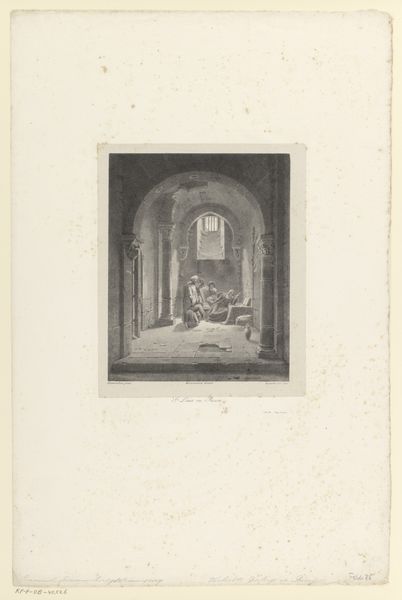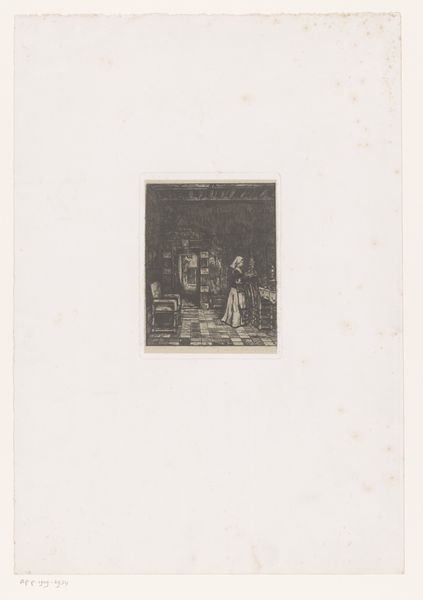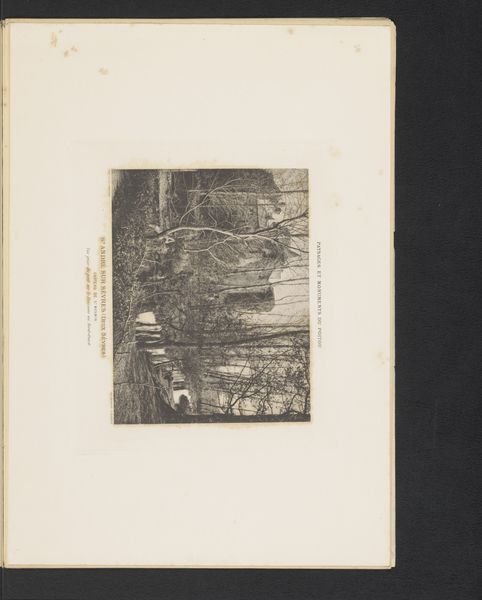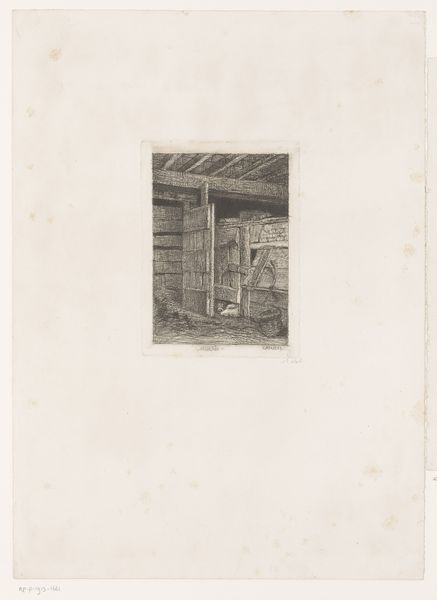
Twee mannen gaan in een donkere straat met elkaar op de vuist terwijl een derde man van een afstand toekijkt 1859
0:00
0:00
drawing, print, etching, paper, ink
#
drawing
#
ink paper printed
# print
#
etching
#
paper
#
ink
#
cityscape
#
tonal art
#
realism
Dimensions: height 262 mm, width 180 mm
Copyright: Rijks Museum: Open Domain
Editor: So, this is "Twee mannen gaan in een donkere straat met elkaar op de vuist terwijl een derde man van een afstand toekijkt", which roughly translates to "Two men fighting in a dark street while a third man watches from a distance," created by Léopold Flameng in 1859, using etching and ink on paper. It’s a rather bleak scene, isn't it? Almost theatrical in its darkness. What do you see in this piece? Curator: This image offers us a glimpse into the social tensions bubbling beneath the surface of 19th-century urban life. Flameng created this image in a print medium, accessible to a wider audience than perhaps painting might be. Consider how prints like these contribute to a public discourse. What is being communicated about class, about justice, and about the role of the bystander in such urban encounters? Editor: That's fascinating. The idea of it being a form of social commentary distributed widely makes a lot of sense given the gritty realism of the scene. Were these kinds of scenes common subjects in art at the time? Curator: Indeed, the rise of Realism as an artistic movement sought to depict everyday life, including its less savory aspects. Images of urban poverty, conflict, and moral decay were meant to be seen by all. Flameng is asking the viewer, what's *your* position within this hierarchy? Is your presence as a viewer, like the third man in the alley? Are you complicit or simply observant? Editor: So, the distribution method of this image itself implicates the viewer. Wow, that's a lot to think about. Thanks for opening my eyes to this cultural context. Curator: Precisely. By exploring how and why such images circulated, we can understand art not merely as aesthetic objects, but as powerful agents of social and political commentary. Hopefully, this perspective informs your view. Editor: It certainly does. Thanks for shedding light on Flameng's social commentary!
Comments
No comments
Be the first to comment and join the conversation on the ultimate creative platform.
